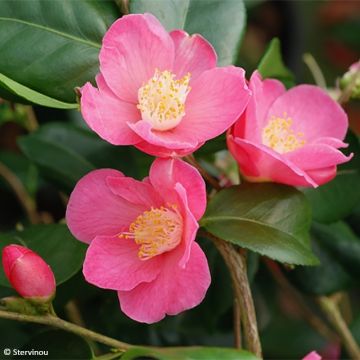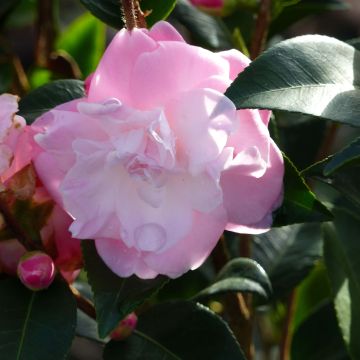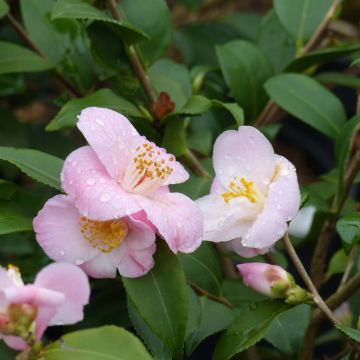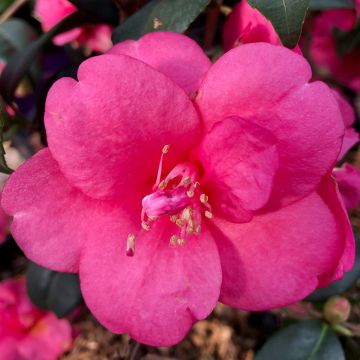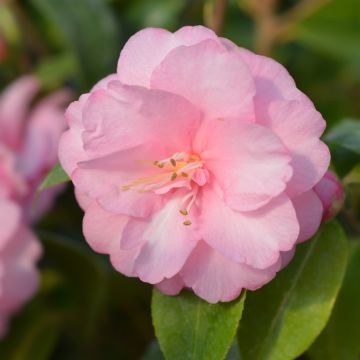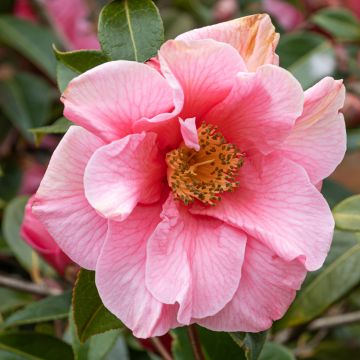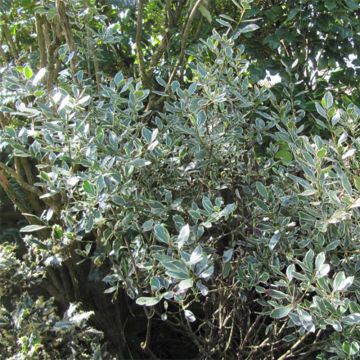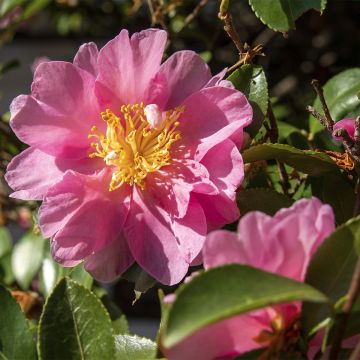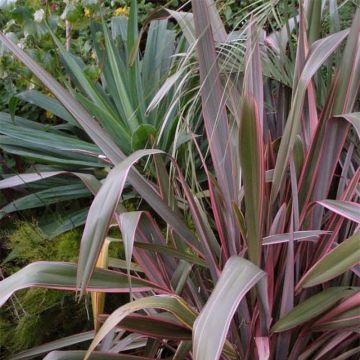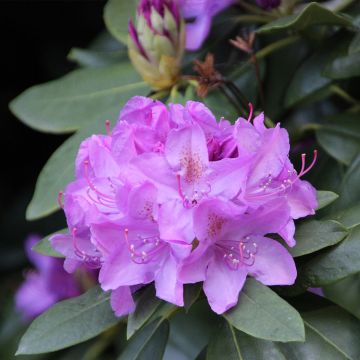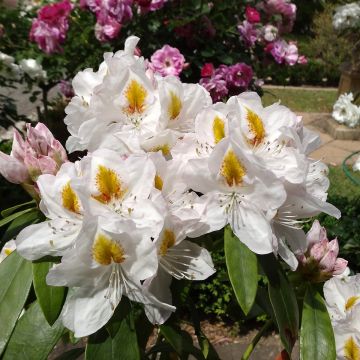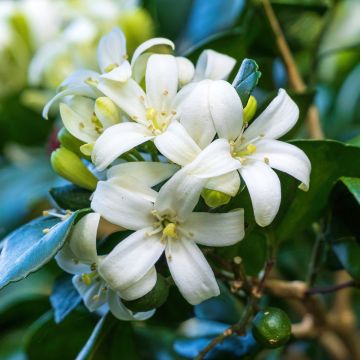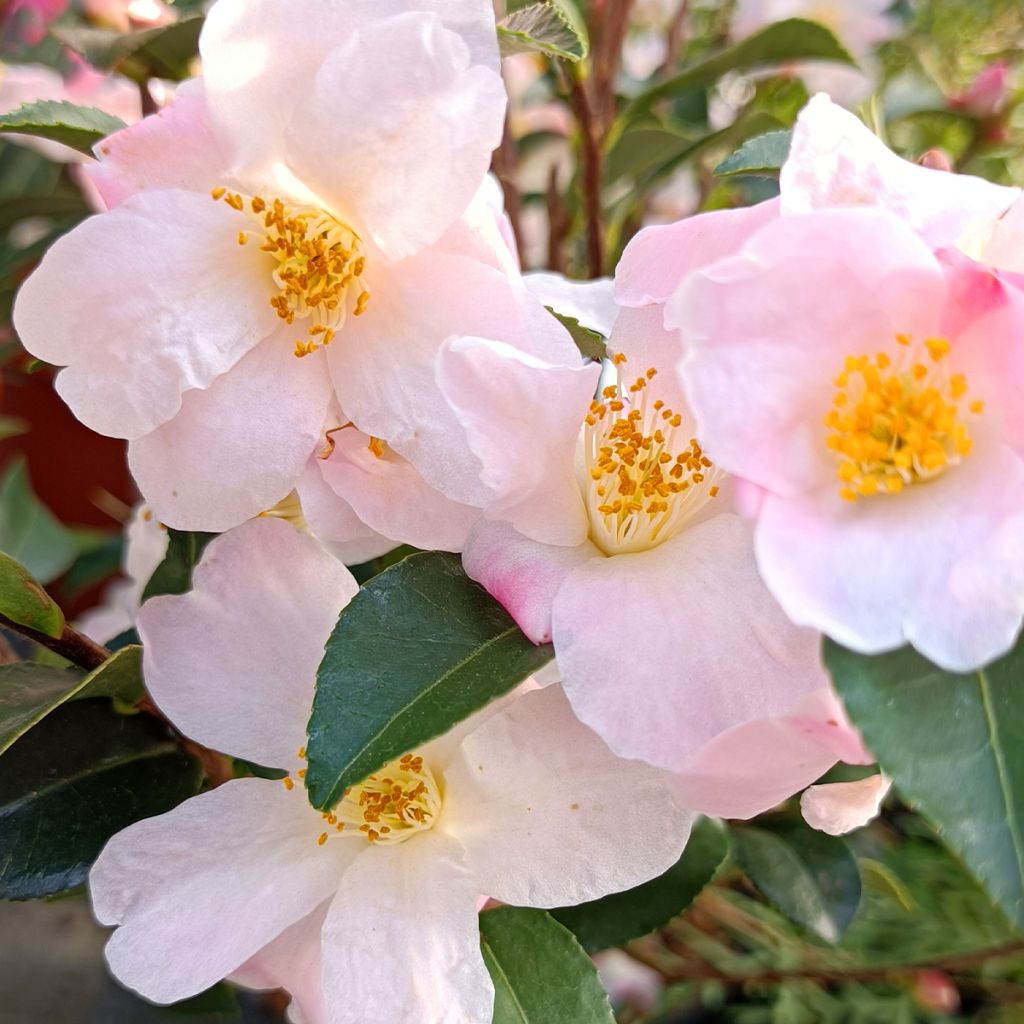

Camélia champêtre Fairy blush
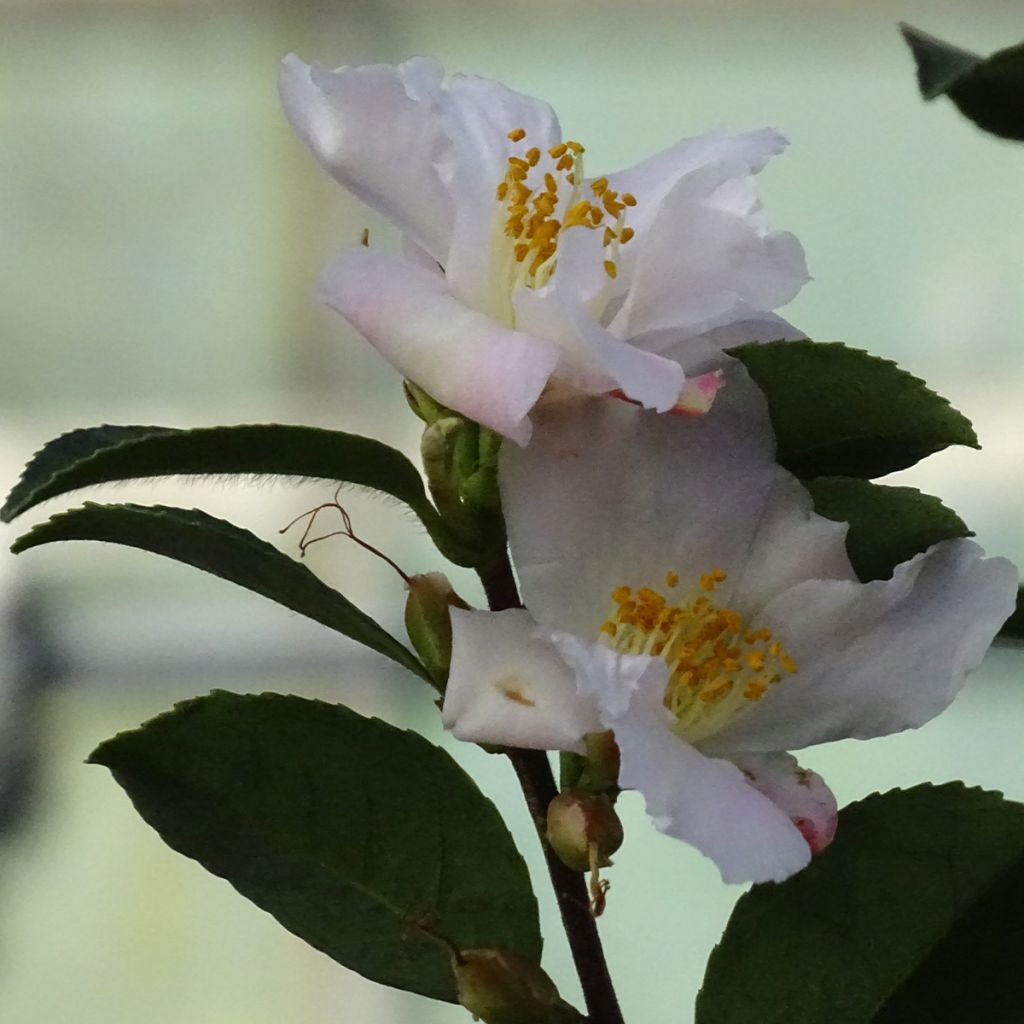

Camélia champêtre Fairy blush
Camellia lutchuensis Fairy Blush
Camellia x lutchuensis Fairy blush
This item cannot be shipped to the selected country
Delivery charge from €5.90
More information
Schedule delivery date,
and select date in basket
This plant carries a 24 months recovery warranty
More information
We guarantee the quality of our plants for a full growing cycle, and will replace at our expense any plant that fails to recover under normal climatic and planting conditions.
From €5.90 for pickup delivery and €6.90 for home delivery
Express home delivery from €8.90.
Does this plant fit my garden?
Set up your Plantfit profile →
Description
Fairy Blush Camellia is a shrub whose enchanting flowering lives up to its name. From the end of winter until spring its branches are adorned with small apricot-pink to white flowers that form delicately scented fairy-like garlands. The corollas are so numerous that they almost eclipse the tiny green and glossy leaves. With a lovely upright and bushy habit and moderate growth, this variety is perfectly suited for ornamenting small gardens or growing in containers on a terrace. This hardy camellia thrives in cool and humid climates, and enjoys non-chalky and well-drained soil.
Fairy Blush Camellia is a New Zealand horticultural variety resulting from cross-breeding with the Lutchuensis Camellia, a botanical species with particularly fragrant evergreen foliage, native to southern Japan. Like all camellias, it belongs to the Theaceae family. 'Fairy Blush' has a generally upright habit, taller than it is wide, with dense vegetation on flexible, erect branches. Its growth is slow: by the age of 10, it will reach about 1m (3 ft) in height and 80cm (32 in) in width. An adult plant will typically reach 1.20m (4 ft) in height and 90cm (35 in) in width, depending on the growing conditions. It blooms from February in mild climates, with peak flowering occurring in March-April. The plant produces a large quantity of small single flowers, about 3-4cm (1.2-1.6 in) in diameter. The bright pink flower buds open into corollas with a slightly salmon-pink colour that fades to white around a cluster of golden stamens. Its evergreen leaves are bright green, measuring 2 to 3cm (0.8 to 1.2 in) in length and slightly glossy on the upper side. Hardy down to -12°C, this variety is cultivated in partial shade or full sun, sheltered from cold winds. It prefers acidic, humus-rich, moist and light soils.
Plant 'Fairy Blush' Camellia in a low rural-style hedge, or in a bed alongside azaleas, Skimmia, Japanese Quince, and heathers. Plant it in autumn with some spring bulbs e.g. tulips and narcissus for a magnificent and colourful scene. Its compact size also allows it to be grown in a pot for many years. Place it on a partially shaded terrace, along a wall, protected from cold and drying winds. This camellia can also be trained against a trellis or a wall facing northeast or east.
The name Camellia was given to the plant in 1735 by the Swedish naturalist Carl Von Linné, in tribute to Georg Josef Kamel (Latinized as "Camellus"), an apothecary in the service of the Jesuits in the Philippines at the end of the 17th century. It was not until 1792 that the Camellia arrived in Europe.
Report an error about the product description
Camellia lutchuensis Fairy Blush in pictures


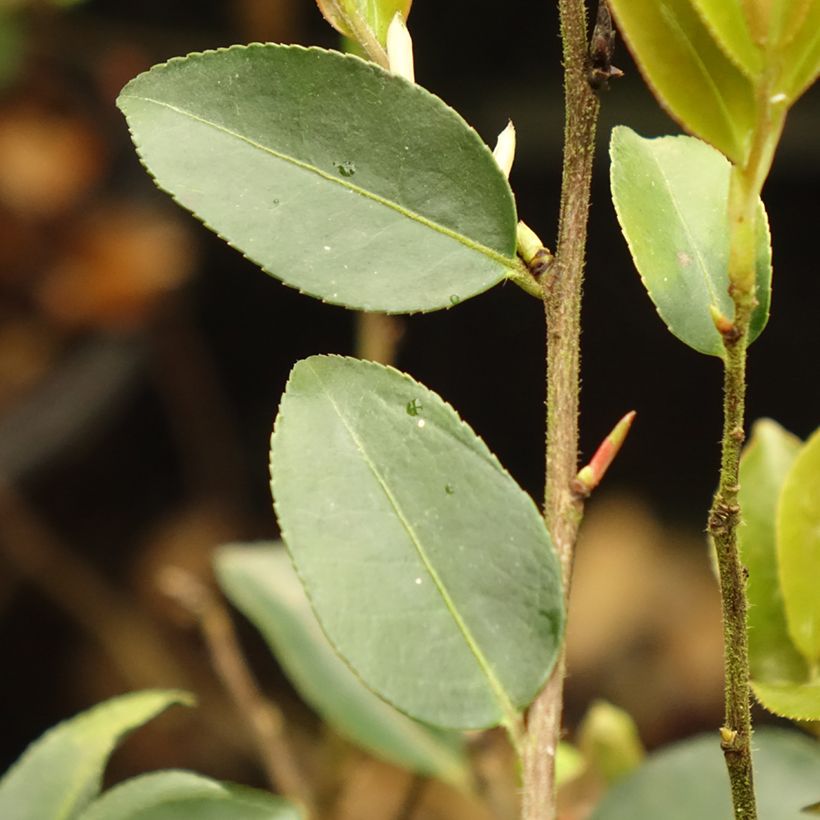

Plant habit
Flowering
Foliage
Botanical data
Camellia
x lutchuensis
Fairy blush
Theaceae
Cultivar or hybrid
Other Wild Camellia
Planting and care
Camellia 'Fairy Blush' thrives particularly well in temperate climates, not too cold in winter, not too hot in summer, and humid all year round. It can be placed in a semi-shaded spot or in the morning sun, sheltered from cold and drying winds. Plant it in a cool, humus-rich, acid to neutral, fertile and well-drained soil. The bush should not be planted too deeply, the top of the root ball should be covered with 3 cm (1.2 in) of soil. In winter, cover it with a 5 to 7 cm (2 to 3 in) thick mulch composed of leaf compost and crushed bark. Be careful of late frosts that can damage the flowers and buds. During dry periods, water the bush with non-calcareous water to prevent the dropping of flower buds.
Mature leaves that yellow, with veins that remain green, are a sign that the camellia is suffering from chlorosis. This is most often a symptom of iron deficiency. It occurs in soils that contain active limestone. Repeated watering with calcareous water also induces this phenomenon, even if the bush was initially planted in an acidic substrate. To correct this deficiency, treatments based on sequestered iron can be used.
Planting period
Intended location
Care
This item has not been reviewed yet - be the first to leave a review about it.
Evergreen shrubs
Haven't found what you were looking for?
Hardiness is the lowest winter temperature a plant can endure without suffering serious damage or even dying. However, hardiness is affected by location (a sheltered area, such as a patio), protection (winter cover) and soil type (hardiness is improved by well-drained soil).

Photo Sharing Terms & Conditions
In order to encourage gardeners to interact and share their experiences, Promesse de fleurs offers various media enabling content to be uploaded onto its Site - in particular via the ‘Photo sharing’ module.
The User agrees to refrain from:
- Posting any content that is illegal, prejudicial, insulting, racist, inciteful to hatred, revisionist, contrary to public decency, that infringes on privacy or on the privacy rights of third parties, in particular the publicity rights of persons and goods, intellectual property rights, or the right to privacy.
- Submitting content on behalf of a third party;
- Impersonate the identity of a third party and/or publish any personal information about a third party;
In general, the User undertakes to refrain from any unethical behaviour.
All Content (in particular text, comments, files, images, photos, videos, creative works, etc.), which may be subject to property or intellectual property rights, image or other private rights, shall remain the property of the User, subject to the limited rights granted by the terms of the licence granted by Promesse de fleurs as stated below. Users are at liberty to publish or not to publish such Content on the Site, notably via the ‘Photo Sharing’ facility, and accept that this Content shall be made public and freely accessible, notably on the Internet.
Users further acknowledge, undertake to have ,and guarantee that they hold all necessary rights and permissions to publish such material on the Site, in particular with regard to the legislation in force pertaining to any privacy, property, intellectual property, image, or contractual rights, or rights of any other nature. By publishing such Content on the Site, Users acknowledge accepting full liability as publishers of the Content within the meaning of the law, and grant Promesse de fleurs, free of charge, an inclusive, worldwide licence for the said Content for the entire duration of its publication, including all reproduction, representation, up/downloading, displaying, performing, transmission, and storage rights.
Users also grant permission for their name to be linked to the Content and accept that this link may not always be made available.
By engaging in posting material, Users consent to their Content becoming automatically accessible on the Internet, in particular on other sites and/or blogs and/or web pages of the Promesse de fleurs site, including in particular social pages and the Promesse de fleurs catalogue.
Users may secure the removal of entrusted content free of charge by issuing a simple request via our contact form.
The flowering period indicated on our website applies to countries and regions located in USDA zone 8 (France, the United Kingdom, Ireland, the Netherlands, etc.)
It will vary according to where you live:
- In zones 9 to 10 (Italy, Spain, Greece, etc.), flowering will occur about 2 to 4 weeks earlier.
- In zones 6 to 7 (Germany, Poland, Slovenia, and lower mountainous regions), flowering will be delayed by 2 to 3 weeks.
- In zone 5 (Central Europe, Scandinavia), blooming will be delayed by 3 to 5 weeks.
In temperate climates, pruning of spring-flowering shrubs (forsythia, spireas, etc.) should be done just after flowering.
Pruning of summer-flowering shrubs (Indian Lilac, Perovskia, etc.) can be done in winter or spring.
In cold regions as well as with frost-sensitive plants, avoid pruning too early when severe frosts may still occur.
The planting period indicated on our website applies to countries and regions located in USDA zone 8 (France, United Kingdom, Ireland, Netherlands).
It will vary according to where you live:
- In Mediterranean zones (Marseille, Madrid, Milan, etc.), autumn and winter are the best planting periods.
- In continental zones (Strasbourg, Munich, Vienna, etc.), delay planting by 2 to 3 weeks in spring and bring it forward by 2 to 4 weeks in autumn.
- In mountainous regions (the Alps, Pyrenees, Carpathians, etc.), it is best to plant in late spring (May-June) or late summer (August-September).
The harvesting period indicated on our website applies to countries and regions in USDA zone 8 (France, England, Ireland, the Netherlands).
In colder areas (Scandinavia, Poland, Austria...) fruit and vegetable harvests are likely to be delayed by 3-4 weeks.
In warmer areas (Italy, Spain, Greece, etc.), harvesting will probably take place earlier, depending on weather conditions.
The sowing periods indicated on our website apply to countries and regions within USDA Zone 8 (France, UK, Ireland, Netherlands).
In colder areas (Scandinavia, Poland, Austria...), delay any outdoor sowing by 3-4 weeks, or sow under glass.
In warmer climes (Italy, Spain, Greece, etc.), bring outdoor sowing forward by a few weeks.

































